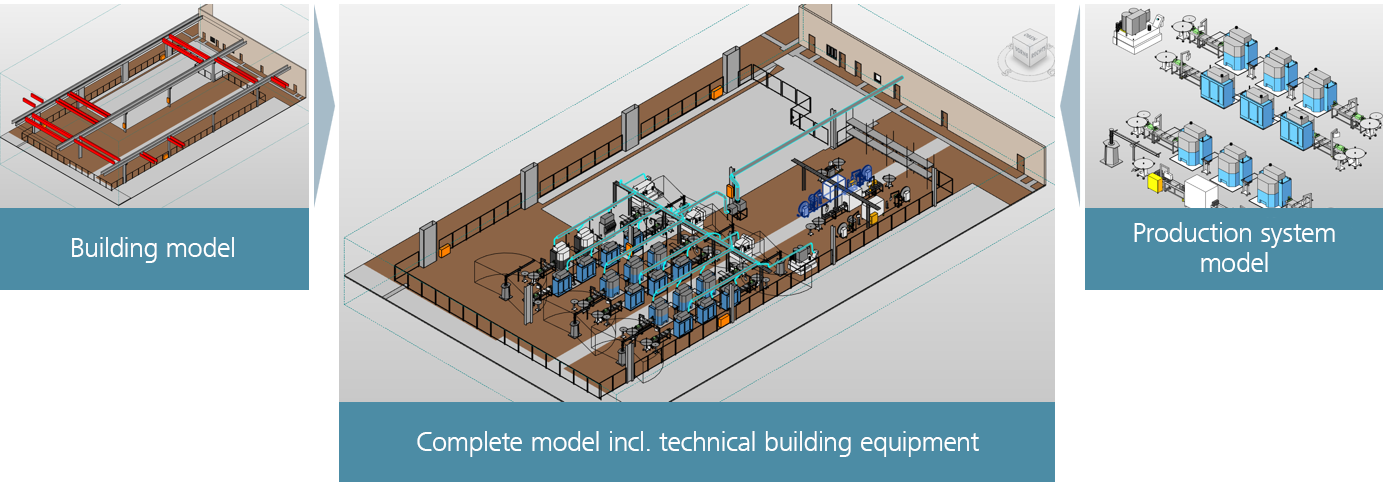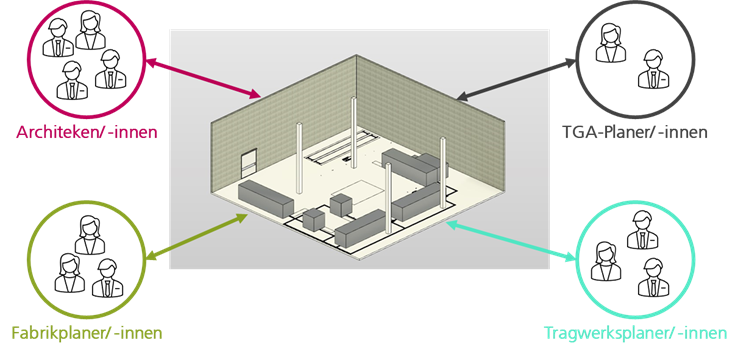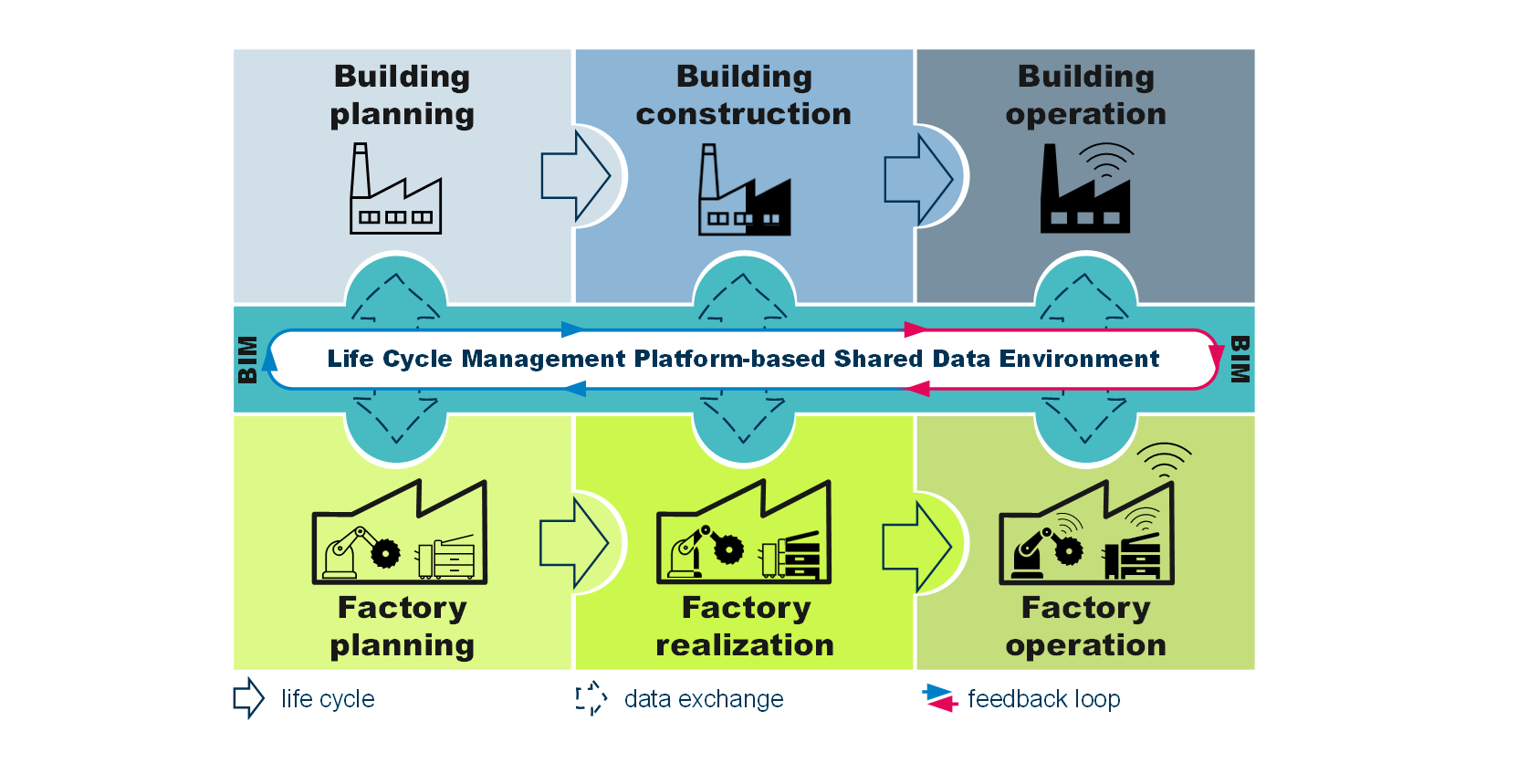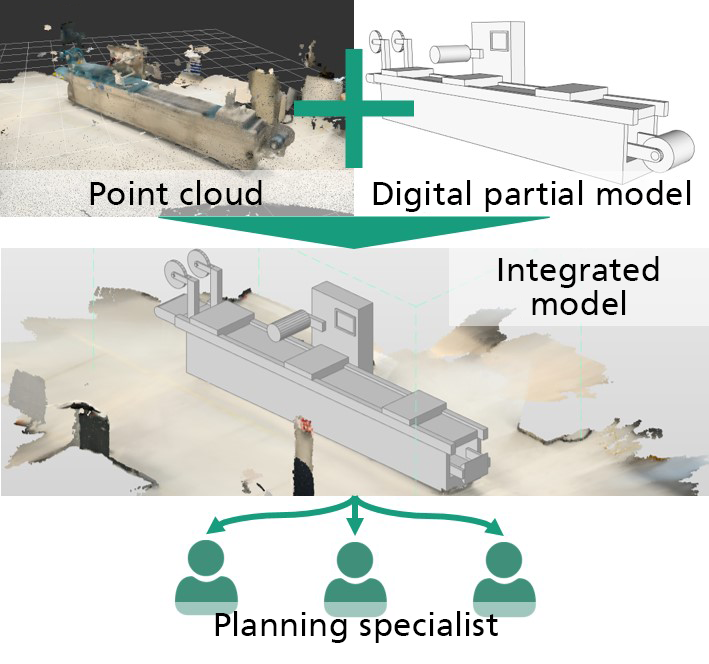What is BIM in factory planning?
Factory planning refers to all areas that are directly linked to production. For efficient and targeted factory operation, the building must also be designed to meet the utilization requirements in addition to production.
The planning of the building and the production system are often separate from each other, which can lead to planning errors and thus to delays and high costs. This is because factory planning in particular requires extensive communication between the various specialist areas (production system, technical building services, structural engineering, etc.), as the production system in the factory places a variety of demands on the factory building.





